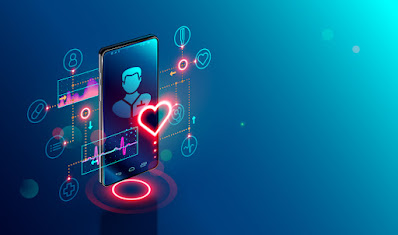NEW SOLUTIONS IN BIOMEDICAL: THE INTERNET OF MEDICAL OBJECTS
The Internet of Medical Things (IoMT) is a cloud-based system that integrates many IoT-based medical devices, especially the Internet of wearable medical objects. From smart devices to smart cities, the IoT has initiated a new phase in healthcare, called the Internet of Medical Things (IoMT).
Today, especially during the COVID-19 period, it has become a necessity to carry out remote medical patient follow-ups in every field. Remote examination and control of patients through telemedicine prevent potential risks that may be encountered by revealing them with early diagnosis.
Also, this feature is very useful for patients in places with limited access to hospitals. Recent developments in the fields of Artificial Intelligence (AI), telemedicine and sensor technologies have made it possible to use the internet of medical objects in the diagnosis of critical diseases.
APPLICATION AREAS OF THE INTERNET OF MEDICAL OBJECTS
In pandemic conditions, data collected by medical devices based on the internet of medical objects can be combined with other data obtained from health systems, allowing the patient to receive health care remotely with lower risk. In addition, remote patient follow-up can be done and critical medical developments related to the patient can be taken under control. IoMT systems, as another application area, generate up-to-date data on providing first aid to people and taking necessary precautions instantly during natural disasters such as earthquakes.
IoMT-based wearable medical devices, which work with low power from the outside or with energy obtained from body movements, can collect vital health data from different subsystems in the body. Sensor systems are used in wearable medical devices; Examples include tear monitoring sensors using smart lenses, body temperature monitoring sensors, blood pressure monitoring sensors, and electroencephalography (EEG) sensors.
IoT-based medical systems provide support in processing and interpreting big data using deep learning algorithms, just like a virtual assistant. By providing feedback with the internet of medical objects in the field of health, the accuracy of the decisions taken can be ensured with autonomous updates.
The Philips Biosensor BX100 was designed to monitor Covid-19 patients in the hospital and detect signs of early deterioration.
where to buy;
C. Dilibal, "Development of Edge- IoMT Computing Architecture for Smart Healthcare Monitoring Platform", IEEE 4th International Symposium on Multidisciplinary Studies and Innovative Technologies (ISMSIT), 2020. IEEE
• C. Dilibal, A. Hacimustafaoglu, S. Dilibal, "Development of IoMT Device for Mobile Eye Examination Via Cloud-based TeleOphthalmology", IEEE Research and Education in Mechatronics (REM) 2020 21st International Conference on, pp. 1-5, 2020.
• C. Dilibal, A. Hacimustafaoglu, S. Dilibal, "Development of IoMT Device for Mobile Eye Examination Via Cloud-based TeleOphthalmology", IEEE Research and Education in Mechatronics (REM) 2020 21st International Conference on, pp. 1-5, 2020.



Yorumlar
Yorum Gönder